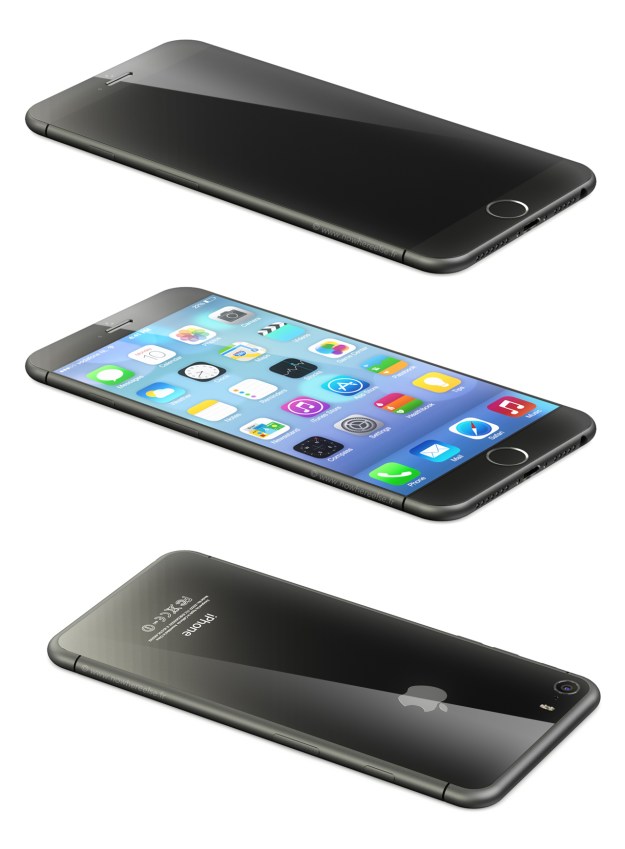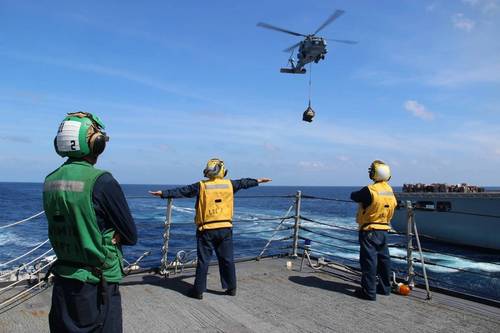Will companies like Oppo and OnePlus bring back the ‘wow’ factor to the smartphone market?
In the last month we’ve seen the introduction of next-gen Android flagships from well-known Android manufacturers Sony, Samsung and HTC. Although all three devices offer solid specs and several other features that set them apart from their predecessors, we can’t help but feel that the “WOW” factor is missing.
There are likely many reasons why a fair number of tech enthusiasts haven’t exactly been blown away by the latest flagship announcements. Probably one of the most obvious reasons is that we’ve come to expect so much from these brands, and therefore its harder to impress us than it was just a few years ago. It’s also hard to deny that the latest flagships feel more like incremental updates than massive leaps forward when compared to their predecessors.
Based on some of the comments we’ve seen in regards to handsets from Chinese companies like Oppo and OnePlus, however, it seems that at least some of our readers have been quite impressed by what some of these lesser known Android players have been up to as of late. It’s true that OnePlus’ teasers have painted the device as a compelling offering, and the Oppo Find 7 equally looks amazing thanks to its QHD display and quick charging capabilities.
In this week’s Friday Debate we ask the following questions: As thebig players are taking less risks and playing things a bit more safely, can newcomers like Oppo and OnePlus bring back the “WOW” factor to the smartphone market? Will increased competition from Chinese manufacturers help shake-up the market in any meaningful way?
Join us in the discussion, vote in our poll, and sound off in the comments.
Robert Triggs
I certainly agree with the lack of a “wow” factor from all of the recently major releases. That isn’t to say that high-end smartphone aren’t great pieces of kit, rather the increase in the number of competitors and high-end handsets has resulted in smaller and smaller leaps between generators, if you can really define generations any more.
Part of the “problem” is that technological differences are becoming smaller and smaller all the time. The leap from a Snapdragon 600 to 800 isn’t really that huge, especially compared with jump from single to dual core. Again, Full HD to QHD isn’t as pronounced as the arrival of 1080p.
As for newer players like Oppo or OnePlus, they’re doing some interesting work, but I don’t think they’re really going to shake things up massively. The technology they’re using will eventually be available in other flagships in just a few months’ time. Perhaps their hardware will grab the attention of enthusiasts, but it probably won’t blow away the average consumer.
The race to the middle is an interesting one, handsets like the HTC Desire 816 are really great looking products aimed just below the top tier. As production costs continue to come down, I’m sure that we’re likely to see some really nice looking mid-range products in the future. The Nokia X is also a showcase for what can be accomplished on a budget. Pressure on prices and technology is working out really nicely for consumers.
The smartphone market has matured now, and this natural plateau has caused a noticeable loss of momentum, but we must remember how far smartphones have come in just a few years.
There are technological innovations to look forward to. Leaps in areas like mobile gaming, smarter wearables, modular designs, and more seamlessly connected devices are yet to come, and I’m certainly looking forward to them all.
Bogdan Petrovan
I don’t blame Samsung, HTC, or Sony for playing it safe. They already invested hundreds of millions in developing great products, and they just can’t throw that away and start over every 12 to 18 months. Add some more millions for burning the shape of their devices onto our retinas, and the pressure to produce profits, and you see why there aren’t any bold devices coming out. Besides, the smartphone is a mature product – the time of growing in leaps and bounds is over, and we now face a period of stable growth or even plateauing. I just hope smartphones won’t have the fate of PCs, which all became “good enough”, and thus boring.
Companies like OnePlus, Oppo, or Xiaomi can afford to be bold, because they have less to lose and because they have to be bold in order to set themselves apart. These young wolves are going after the throats of the old pack leader, and honestly I hope at least one of them makes it. The Oppo Find 7 is amazing in its ambition. It’s a beautiful piece of technology with the best specs around. I expect nothing less of the OnePlus One when it comes out next month. But do they deliver the wow that Samsung or HTC are missing? Not really.
For something truly spectacular I look at Google. Project Ara or Project Tango are amazing examples of what you can do (or at least try to do) when you can take risks, knowing that you have the resources of the biggest technology company in the world. What really excites me though is Google’s ongoing effort to create a truly intelligent assistant and to make it available on every device in the world. When that happens, we will all be wowed.
Jonathan Feist
Does the OPPO Find 7 and OnePlus One bring “wow!” to the smartphone industry? Absolutely. Is that alone enough to change the Android market? Maybe not.
I am strongly reminded of the automotive industry. The thing is, auto makers like Ferrari, Lamborghini, Bugatti and more bring “wow!”, and then some, to the roads, but the cars we take home are the comparatively boring Ford’s, Toyota’s etc.
Before the argument of price of cars comes up, consider that one of the most “wow!” car makers out there, Tesla, sells their current model for the same price as a pickup truck or SUV. And trust me, pickups and SUVs do not wow like a Tesla!
Back to the point, the best “wow!” features from supercars usually just end up silently making their way to the mainstream makers. I believe that this will be true of the Android market. We are destined to see great new features all blend together into future devices by the big players, but we’ll be less and less impressed by the devices themselves. Incremental growth is great, but boring.
I love the new features that OPPO and OnePlus are bringing to the table, I hope that they develop into the supercars of the industry.
Andrew Grush
As at least a few of my co-workers know, I’m a big fan of the “little guy”, and that’s equally true when it comes to certain companies in the world of Android. I’m am particularly excited by Chinese companies like Oppo and OnePlus because they are working to bring us amazing features, high-end hardware, low-pricing and some of the ‘wow’ factor that I’m just not seeing from the bigger companies anymore.
Don’t get me wrong, HTC, Sony and Samsung all have great hardware, they’re just not what I’m looking for personally (though Sony comes very close.. if pricing was just a bit lower!) For me, the main factors for choosing a smartphone include pricing/value, features and how close the handset is to stock. I don’t like the overload of software customizations we see particularly from HTC and Samsung, and I personally favor the Nexus line and own a Nexus 5.
That said, if anyone could get me to move away from a Nexus handset, I think it’d be Oppo, OnePlus, Xiaomi, Meizu or even Vivo — especially if any of these brands end up embracing CyangenMod the way we’ve seen with the Oppo N1 CyanogenMod Edition and the upcoming OnePlus.
Back to the real question though: will Chinese companies shake up the industry or really bring back the “wow” factor that (arguably) has been lost? No, they probably won’t. Sure, some tech geeks like myself will embrace these alternatives due to their underdog status, awesome specs and low price-points. You can also bet that many of these bleeding edge features we’re seeing from Chinese players will eventually roll out to established players like Samsung and HTC. But that’s about where the influence ends.
Could this change eventually? Maybe. If Oppo and OnePlus keeps pushing hard, they could eventually become part of the ‘big boys club’. When they do, however, I imagine they will slow down when it comes to making bold moves and major design changes as well. Why? As Bodgan said so well, once you invest so much in creating your brand identity it’s hard to throw it all away in the hope that your changes will “wow” both your existing customers and new ones as well.
source: http://www.androidauthority.com/oppo-oneplus-wow-362616/
 By Zach Epstein
By Zach Epstein















 TENNESSEE BUREAU OF INVESTIGATION VIA AP
TENNESSEE BUREAU OF INVESTIGATION VIA AP